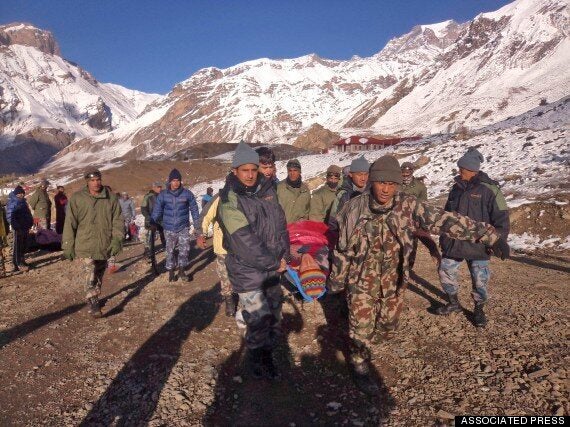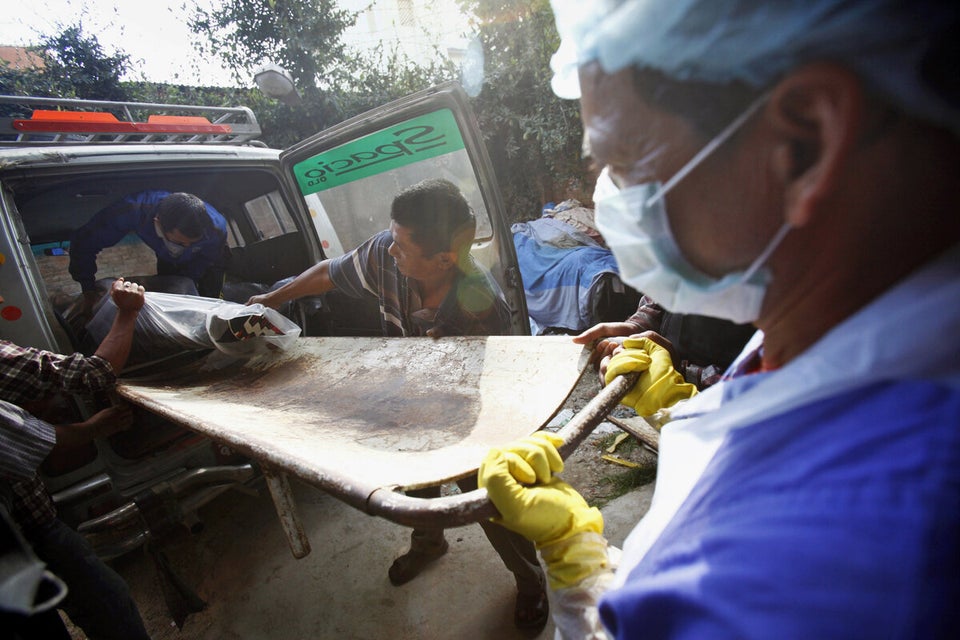A British survivor of a Himalayan mountaineering disaster has recounted how he escaped the horrific blizzards and avalanches which led to at least 29 deaths earlier this week.
Paul Sheridan said walkers were left stumbling through "an abyss of nothing" as dense snow left them unable to orient themselves on the slopes of the Annapurna range in northern Nepal.
Mr Sheridan said that trekkers should have been prevented from going up the mountain, but were "herded to their deaths" by guides who he alleged were not carrying the correct emergency equipment.
Rescuers have pulled out more than 230 trekkers - most of them foreigners - since rescue efforts began on Wednesday, and are still searching the Annapurna range looking for more survivors, who are believed to be stranded in lodges and huts. Hiking remains difficult because of waist-deep snow.
The Nepalese government has announced a high level committee with two senior ministers to monitor and co-ordinate rescue efforts in what is shaping up to be the country's worst mountaineering tragedy.

Soldiers carry an avalanche victim before he is airlifted in Thorong La pass area in Nepal
Mr Sheridan, a police officer from Doncaster, told BBC Radio 4's Today programme how he had walked into "an absolute position of fear and sheer terror" as he tried to descend the mountain.
"Somebody shouted - and I believe it was one of the guides - 'Move forwards! Move forwards!'," said Mr Sheridan. "But as we moved forwards, conditions worsened and we became involved in blacked-out conditions where the ground became the same colour as the sky and it was difficult to see which way was up and which way was down.
"The queue became larger and larger and slower and slower. I pushed my forwards through the snow, gasping for air. I pushed and pushed past the people who were orderly queuing and I managed to join a group of people who were making progress that I believed to be down the hill, though I didn't know for certain.
"As I descended this abyss of nothing, I realised that the people I was following didn't know where they were. It was at that point that I realised I had gone from a place of safety into an absolute position of fear and sheer terror.
"I looked around and I saw a Nepalese boy and his face was frozen. There was sheer glass ice hanging on his cheek. I went across to him and I said 'Your face is frozen' and he said 'I know' and he began to cry and we both began to cry. I didn't know whether or not this Nepalese boy was going to survive. The injuries to his face were horrific.
"There was a Spanish woman stood next to me who looked as horrified as I did and I looked at her and put my arm on her and said 'Don't worry, we're not going to die, we're going to live today. We're all going to live'. She grabbed me and we all cried together in a huddle on the side of the mountain.
"At that point the wind came again and we were all forced to the floor to prevent ourselves from being blown away.
"I recognised there was a Nepalese chap there and as people were at this point in disorientation and running around, I realised that he also was in disorientation and I said into his ear 'Just keep calm, just calm down. Is there anything you recognise?'
"As we looked around, there was just blankness. But fortunately there was a brief respite and I saw a pole. These poles were our way to safety.
Story continues below pictures...
"So what I did was I worked with the guide and we worked together and I led the way to the pole. I said to the people I was with 'Make sure you can always see the person in front and the person behind and if you can't, somehow make as many people aware as you can'.
"We picked our way down for two hours through this maze of poles that sometimes we couldn't see for minutes on end, but it seemed to bring some sort of calmness and order to affairs.
"My experience of walking in the hills not only saved my life but at least 10 other people who I thought were with me.
"As we dropped and went further down, I realised it wasn't just 10 people, it was probably 150 people. Because of the density and intensity of the weather and the wind and the fog, I hadn't realised how many people had been attached to this particular group. I just stopped and I looked and I cried.
"It was around that time that I heard the rumble of an avalanche and I heard the large thunder and roar of snow falling and I just knew, due to the number of people, that there were going to be fatalities. It was horrific."
Mr Sheridan added: "My view is that this incident could have been prevented. I knew the weather forecast before I set off.
"Having spoken to my guide, who wasn't there but obviously has been there, they say that the weight that the porters carry is so great that they leave their own personal safety equipment behind to lighten their load. That to me is an absolute disgusting folly.
"All they are doing is leading people to a certain death, and themselves.
"If someone had taken the responsibility just to stop people going up there, I'm sure the fatalities would have been a lot less. They were herded up that mountain to their death, and something needs to be done to address those facts."
